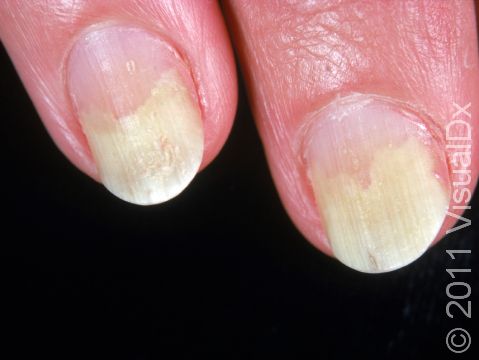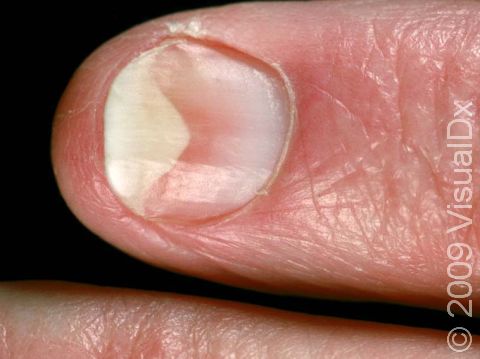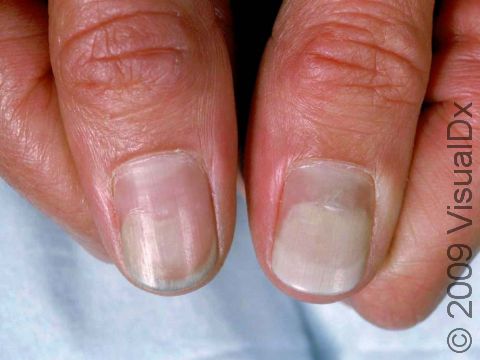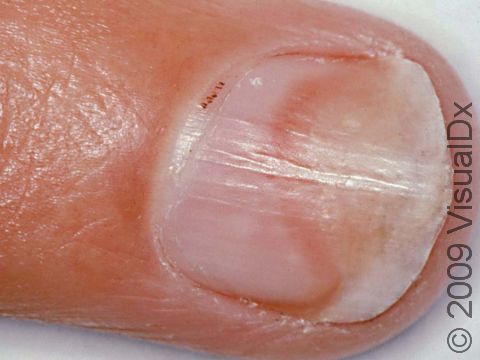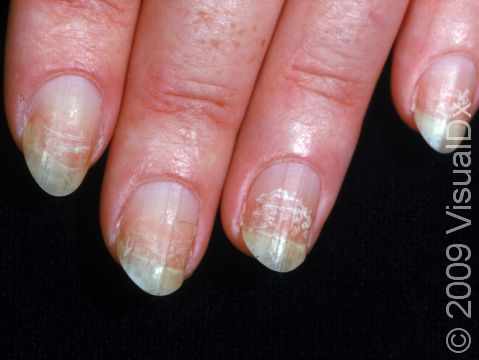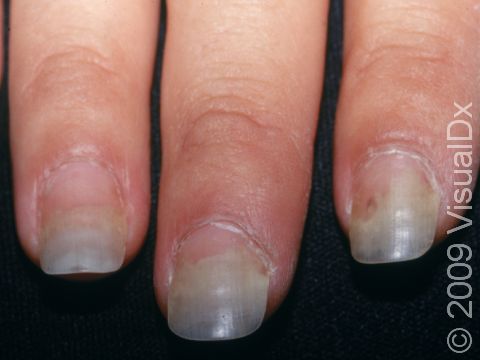Nail Lifting (Onycholysis)
Nail lifting (onycholysis) is the spontaneous separation (detachment) of the fingernail or toenail from the nail bed at the end of the nail (distal) and/or on the sides of the nail (lateral). The appearance of nail lifting may resemble a half-moon, or the free edge of the nail may rise up like a hood. Nail lifting creates space under the nail that gathers dirt and debris made of protein in the nails (keratin). As water accumulates under the nail, bacteria and yeast can also cause the area to become infected.
Nail lifting may occur with other skin conditions, such as various forms of eczema (including hand dermatitis), psoriasis, and lichen planus. Nail lifting may also occur with underlying medical problems, including thyroid disease, pregnancy, some forms of infection, and rarely some forms of cancer. Other possible causes are injury to the nails, use of nail cosmetics, and aggressive manicures.
Nail lifting may be caused by some medications, such as chemotherapy and drugs made from vitamin A. Some medications (commonly tetracycline) may interact with sunlight to cause nail lifting.
Who's At Risk?
Nail lifting may affect people of all ages. Women are affected more frequently than men.
Signs & Symptoms
Nail lifting occurs on the fingernails and the toenails. The nail separates from the end (distal) and/or the sides (lateral) of the nail bed and may even separate completely from the finger.
Self-Care Guidelines
- Thoroughly clip away as much of the detached nail as possible, repeating this at weekly intervals.
- Gently brush the nail and surrounding tissue with plain soap and water once daily, rinsing carefully, and then drying the area with a hair dryer.
- Protect the nails by wearing plastic gloves worn over light cotton gloves to avoid frequent contact with water. Use any mild cleanser as an alternative to water and soap.
Treatments
In addition to the self-care measures noted above, your doctor may prescribe:
- Treatment for any skin conditions, medical problems, or exposures that may be causing your nail lifting.
- If bacterial or fungal infection is present, you may require antibacterial or antifungal treatment.
Visit Urgency
See your doctor if the nail lifting becomes bothersome. Your doctor may perform tests for conditions or infection that may be causing the nail lifting.
Trusted Links
References
Bolognia, Jean L., ed. Dermatology, pp.1062, 1064. New York: Mosby, 2003.
Freedberg, Irwin M., ed. Fitzpatrick’s Dermatology in General Medicine. 6th ed. pp.2001, 2003. New York: McGraw-Hill, 2003.
Last modified on October 10th, 2022 at 4:06 pm

Not sure what to look for?
Try our new Rash and Skin Condition Finder
